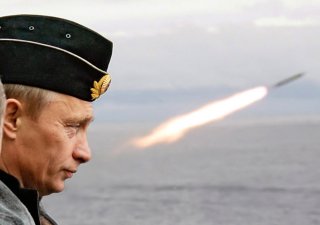Putin is Pleased: Russia's Tsirkon Missile Is Almost War-Ready
Chief of the Russian General Staff Valery Gerasimov, one of Russia’s top military officials, stated earlier in December that the missile is nearing the end of state trials.
Russian president Vladimir Putin lauded what state media sources describe as another successful test-launch of the country’s newest Tsirkon hypersonic cruise missile.
"Last night or, to be more exact, this morning, the Tsirkon hypersonic system was salvo-launched,” said Putin during a joint meeting of the State Council and the Council for Science and Education. “This is our latest missile that can strike both naval and ground targets. The tests were successful and impeccable. This is a big event in the country’s life and a considerable step towards enhancing Russia’s security and its defense capability.” Putin asked Industry and Trade Minister Denis Manturov “to convey his best regards and congratulations” to Tsirkon’s manufacturer, NPO Mashinostroyeniya, a missile design bureau based in the broader Moscow region. The Tsirkon missile was tested at least eight times aboard the Northern Fleet’s Admiral Gorshkov, the lead ship of the Project 22350 Admiral Gorshkov-class frigates, from the beginning of 2020. Russia’s Defense Ministry published an eighteen-second clip of a recent Tsirkon test launch from Admiral Gorshkov in late November.
Chief of the Russian General Staff Valery Gerasimov, one of Russia’s top military officials, stated earlier in December that the missile is nearing the end of state trials. “The trials of the Tsirkon shipborne missile system are being successfully completed,” Gerasimov said. “These trials proved the possibility of launching this hypersonic missile both from a surface ship and a nuclear-powered submarine from the submerged position."
The 3M22 Tsirkon, also known as Zircon and by the North Atlantic Treaty Organization reporting name SS-N-33, is a winged, hypersonic anti-ship cruise missile. Tsirkon was among the five new weapons unveiled by Putin during his 2018 state-of-the-nation address. The missile can reportedly reach speeds of up to Mach 9, or just under 7,000 miles per hour, and features an operating range of roughly 1,000 kilometers. Russian military experts and officials believe that the Tsirkon will provide a significant performance boon over the country’s older supersonic cruise missiles, posing a credible threat against U.S. and NATO carrier strike groups (CSG’s) and thus hampering the effectiveness of western carrier air wings.
According to earlier Russian media reporting, Admiral Golovko, the third Admiral Gorshkov-class frigate, will be the first Russian vessel to carry Tsirkon missiles. The missile is expected to make its way to a wide swathe of Russia’s latest and most advanced vessels, including the Admiral Grigorovich-class and Admiral Gorshkov-class frigates, Gremyashchiy-class and Buyan-class corvettes, and the battlecruisers Admiral Nakhimov and Pyotr Velikiy.
With the government certification process drawing to a close, Defense Minister Sergei Shoigu announced last week that the missile will be introduced into service sometime in 2022.
Mark Episkopos is a national security reporter for the National Interest.
Image: Reuters

